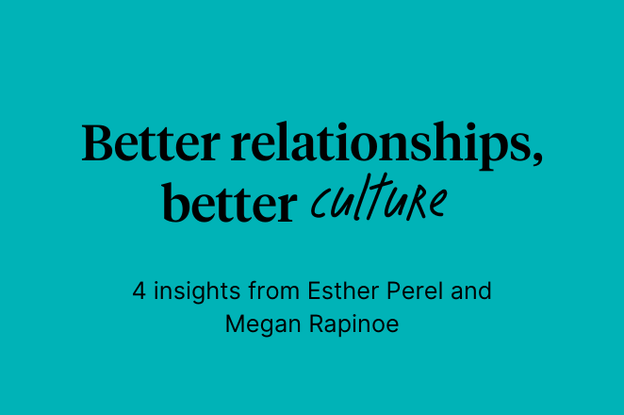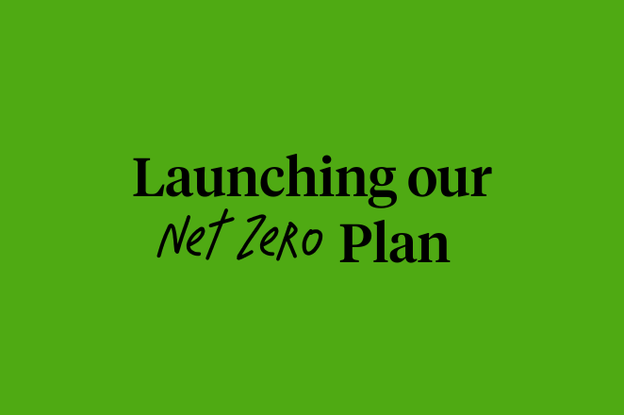How to leverage your employer brand for hiring and retention

Every organization has a unique employer brand, which is defined by their company values, mission, and culture. However, as most People Leaders know, the process of uncovering this brand and making it visible internally and externally can be challenging.
That’s why Culture Amp hosted a webinar with a panel of knowledgeable speakers to discuss what employers can do to strengthen their brand and improve the employee experience, from hiring to engagement to retention. This conversation was moderated by Culture Amp’s Senior People Scientist, Craig Forman, and our speakers included:
- Bart Macdonald, CEO and Co-Founder of Sapling
- Christina Luconi, Chief People Officer at Rapid7
- Jamie Hichens, Senior Manager of Talent Acquisition at Glassdoor
In this article, we share five actionable tips from our speakers about how to uncover, integrate, and amplify your company’s brand.
Defining the Employee Value Proposition (EVP)
Before we dive in, it’s important to understand what Employee Value Proposition, or EVP, is. While it sounds like a fancy business acronym, the underlying concept is foundational when it comes to building an employer brand. As defined in the book, The War for Talent, an EVP is an answer to the question: “Why would a highly talented person choose to work here?”
Below is each speaker’s personal take on EVP:
Christina Luconi:
“For me, the EVP is about who we are, what our company is about, how we live our lives here, and what's important to us. It comes with looking in the mirror and knowing who we are. There's a lot of great things about Rapid7, but we're not trying to be all things to all people.”
Bart Macdonald:
“It’s about being authentic and providing a proposition of who we are as a company, and what you can expect in return for your contribution as a current or prospective team member. The EVP provides a remarkable opportunity to brand the company at every stage of the employee journey, from being a driver of talent, all the way through to retention of existing employees.”
Jamie Hichens:
“As far as your values go, you want to think about not only how you want to be seen by the outside world, but also what truly resonates with the company and what value you're bringing to clients. I think the questions to consider are: “What principles are guiding your decisions?” “How are these values differentiating you from your competitors?” And “What qualities do you value in your employees?”
5 tips for leveraging employer branding to improve hiring and retention
Below, we've summarized the speakers' top tips for using EVP to drive the hiring and retention. of top talent.
Tip 1: Uncover your company’s EVP
Now that we’ve defined EVP, let’s address how to uncover yours. Our speakers agreed on the importance of uncovering values that are specific to your company versus generic ones that aren’t meaningful to your employees. This is an easy step to gloss over, but Christina urged everyone to make it an intentional process. For instance, when she first joined Rapid7, the company was scaling quickly but didn’t know what direction they wanted to grow in. So they decided to pause and use the help of their employees to define their core values.
“Rather than having me or the executive team frame them, we used the culture advocates at our company to help design what our core values will look like. When we rolled them out, 30% of the company was already bought in since they had helped frame it," explained Christina.
Bart agreed and emphasized the value of going out to the frontlines to collect the thoughts of employees - who are ultimately the most important stakeholders at a company. He explains, “Go out into the field, gauge the pulse of the organization, and ask your employees: ‘What do you think we stand for here at Sapling?’ Getting an understanding of what your community stakeholders believe the company’s values are today, and what the values will look like going forward, is so important.”
Tip 2: Make your brand visible throughout the employee experience
Our speakers also recommended making the employer brand shine throughout every step of the employee experience. We highlighted their best piece of advice for three major moments in every employee’s time at a company: recruiting, onboarding, and retention.
- Recruiting. Bart explains, "This starts all the way back from how you position yourself externally on Glassdoor, LinkedIn, and other profiles. From there, it’s everything from your outreach to candidates to your on-site interviews. For instance: have structured interview questions that link back to your values. So if a value is “customer first,” ask the candidate to share some examples from a previous role of how they really embodied this trait.”
- Onboarding. Jamie shares, “The onboarding experience should begin even before the candidate starts. When we extend an offer to a candidate, my hiring team reaches out to tell them how excited we are. Before they start, we have the new hire come on-site to have lunch with the team. On their first day, I always find time to spend with them. Even after they’ve officially ‘started’ from a recruiting perspective, I’ll still do monthly check-ins for the first ninety days. After ninety days, we’ll do a recap with our HRBP to make sure the new hire is set up for success.”
- Retention. Christina elaborates, “Here’s an example of how we keep people feeling connected to our brand, even before they walk in the door: we have several new hires who are currently college students and don't start until July. They're heading into finals week, so we made them ‘good luck’ bags with little cookies and gift cards for coffee. We also put a stuffed moose because the moose is our symbol for teamwork, which is one of our values. We want them to know they’re already connected to us and what we stand for.”
Tip 3: Don’t dismiss employee perks
Perks have become stigmatized in the modern HR industry. They’re now synonymous with endless snacks and ping-pong tables, but Bart cautioned us to not dismiss the value of these extra benefits.
“There's a bit of a misnomer in some parts of the community around perks being superficial. I think perks are about really cutting to the employee experience. This means coming back to the question of “what do we stand for here?,” explains Bart.
Christina agreed and emphasized that this intentionality - and communicating it - is a key part of offering meaningful perks.
She continues, “We have no tracked vacation policy at Rapid7, for example. We have more problems trying to get people to take vacation, than we do with people abusing it. We want our employees to understand that we're not trying to mirror the same vacation policy as every other company. Because we trust that our employees are going to make smart choices and do their work, we want them to take the time they need. We're not going to nickel and dime them every time they want to take an afternoon off or go to a doctor's appointment. And I think giving that explanation and helping our people understand why we chose this perk is important.”
Tip 4: Communicate, communicate, communicate
Without external and internal communication, your employer brand will go largely unnoticed. That’s why people teams need to consider various communication strategies, channels, and tactics to make sure everyone at the company is being reached. According to Jamie, these efforts need to start with the leadership team.
He describes, “It really starts from the top. Leadership has to embody our brand because it trickles down. Every month, we have an all-hands meeting at Glassdoor where our CEO gets up to share updates. Then we have a Q&A where people ask him questions, which he answers very transparently. And I think that’s a big part of our culture - to have that open-communication format with all of our leadership and peers.”
Christina made the great reminder that any type of communication will lose its significance unless it’s followed up with actions.
“It's not just what you communicate, it's what you show," explains Christina. "There are lots of companies that can talk a great game, but it's how you walk that walk that’s valuable. One silly example for us is our core value awards. Every quarter at our town hall meeting, we have employee-nominated core value awards. The executive team ultimately decides, so we have diversity across these winners, but it’s our way of celebrating people for living the core values of the company.”
Bart also mentioned that one of the most exciting opportunities in the people community is the transformation of HR from an administrative, compliant-focused role to a truly strategic, data-driven role. Which means that communication now can and should be bolstered by analytics. He describes, “There are so many amazing tools now available to people teams. You can actually pinpoint the impact that your culture is having at certain points of the employee journey, from hiring to onboarding to offboarding. You can use the data you gather to make informed decisions and communicate that up to the executive teams.”
Tip 5: Nurture brand ambassadors
At Glassdoor, employee referrals are the number one source of hiring. According to Jamie, the reason behind this successful recruiting strategy boils down to the power of the company’s brand ambassadors.
He continues, “Your employees are going to be your best brand ambassadors. One way to cultivate this is to have employees consistently do something to contribute to employer branding. For instance, if one of our recruiters is trying to hire for a sales role, they’ll interview people on that team and ask them what the culture is like, what the role will entail, do a quick office tour, and create a video to post on social media. This is our way of showing the outside world what it's like to work at Glassdoor. We also produce a lot of content and make sure our employee’s voices are amplified there.”
Bart pointed out that having employees serve as brand ambassadors for the company can take up some of their valuable time. This is why it’s critical to make sure they have all the necessary resources at the tips of their fingers, as well a culture that truly values their contributions to the hiring process.
“Referral-sourced candidates have been proven to show a much higher level of effectiveness, as well as longer attrition and performance," said Bart. "You need to provide employees with continual education, access to assets and tools, and set them up for success. Make it part of the company culture, where it's really valued to spend part of your time helping hire the next wave of A-players. I also think measuring is really important - you want to build the program, then close the loop by asking 'what were the KPIs that we set around this?' 'What sort of training do we need to do, or updates do we need to make, for a more effective program?'"
Tap into the full potential of employer branding
We loved hearing from our speakers about their unique approaches to employer branding, and how they’ve used this concept as a powerful tool to enhance every aspect of the employee experience. A huge thanks to Sapling, Rapid7, and Glassdoor for being part of this discussion! If you want to tune in to our next webinar, be sure to check the schedule and RSVP here.
Sign up
Get our newsletter, event invites, plus product insights and research.






